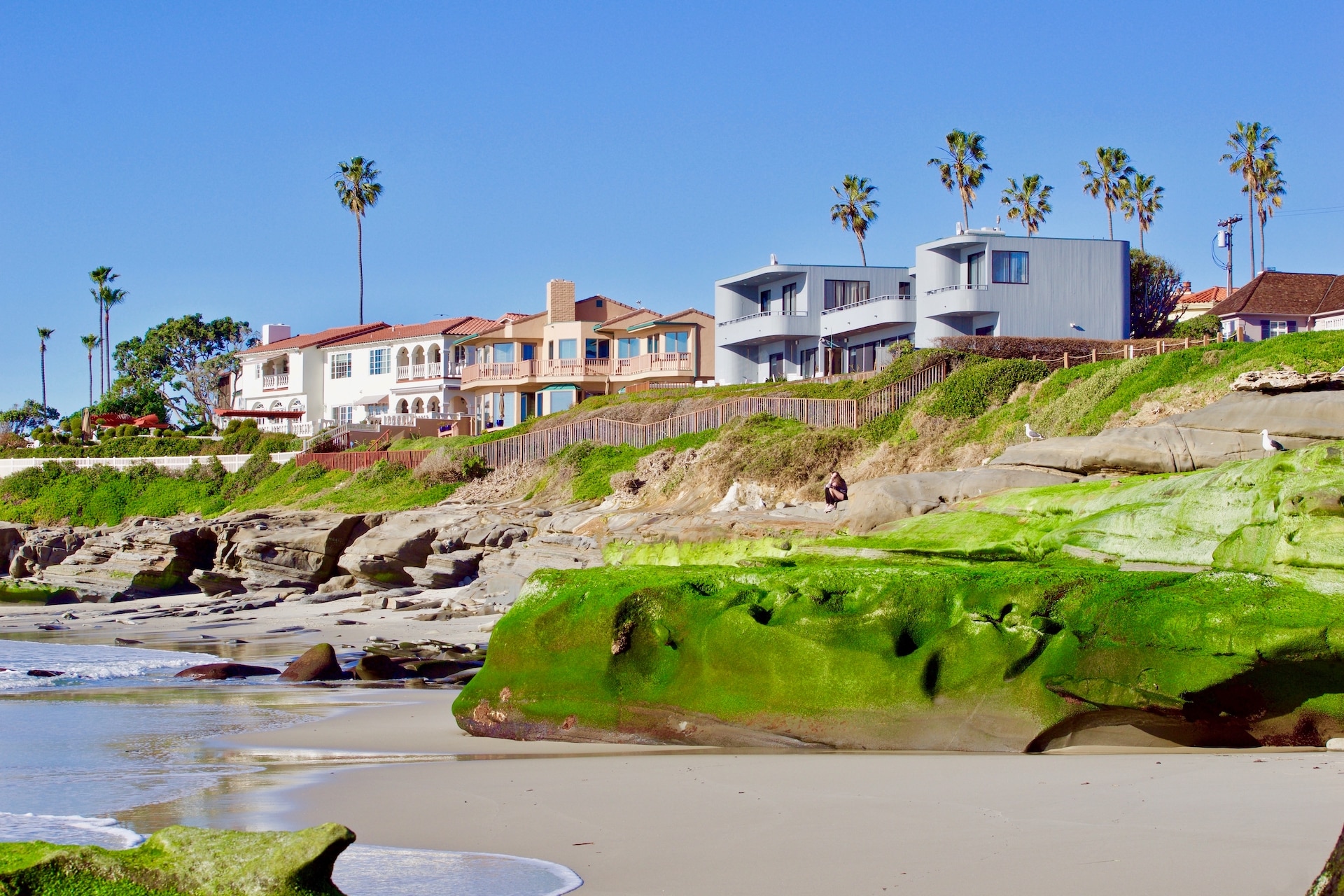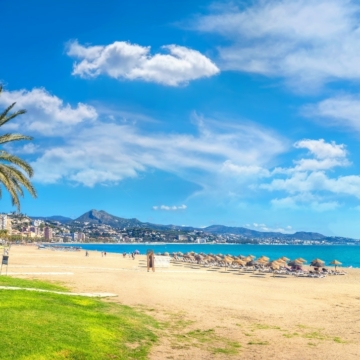looking to buy a home?
Submit this Form and Benefit from our 25 Years' Experience & Strong Local Network.Spain’s coastal regions have long been favored by those seeking a mix of sun, sand, and cultural beauty. With its breathtaking scenery and rich heritage, Spain remains a popular choice for those looking to invest in property, especially in coastal areas of Spain. They have experienced steady growth in the real estate market, but experts are anticipating a downturn this year due to increased interest rates and inflation.
However, despite higher inflation and interest rates, the coastal property market has proven resilient as the prices have increased due to domestic and foreign demand.
We at Realista tell you about the current state of the Spanish coastal property market and provide a forecast of the prices in the coastal region for this year.
Current State of the Spanish Coastal Property Market
The real estate market in Spain is experiencing different trends compared to other European countries, as property prices in coastal areas and islands surge above the national average, driven by demand from second-home buyers.
According to the most recent report from Gesvalt for the second quarter of 2023, Spanish property prices experienced a substantial growth of over 6% during the first half of this year compared to the same period in 2022. This increase significantly outpaced the inflation rate by several percentage points.
The location of the property, however, considerably affects these numbers. The most significant price increase was found in coastal regions, notably those along the Mediterranean coast.
For your convenience, we have shared some important points from the reports mentioned below.
- The real estate market in the country has been experiencing a remarkable growth trend.
- The year-on-year increase in real estate prices from January to March was recorded at 6.7%.
- The increase from April to June was 6.4%.
- The market has sustained a consistent growth rate of more than 3% for this period.
- Quarter-on-quarter real estate prices have also been increased.
- An increase of 2.1% on a quarterly basis was recorded between April and June compared to a 1.9% increase rate at the beginning of 2023.
- Experts predict a sustained period of growth and a promising outlook for the coastal real estate market.
Inland Spain: A Different Story
In contrast to the coastal boom, some areas of interior Spain haven’t seen a substantial increase as the prices have moderated in some inland areas, even some of them seeing a slight decrease. Metropolitan areas have seen the most considerable growth, with prices up 6.3% year-on-year.
Second Home Buyers Driving the Surge
The surge in property prices in Spain’s coastal areas and islands can be attributed mainly to the growing interest from second-home buyers. These regions are significant beneficiaries of tourism, attracting potential buyers seeking vacation homes or investment opportunities. The appeal of living close to beautiful beaches and natural landscapes has made these areas more resilient to inflation and rising mortgage costs.
Factors Contributing to Interior Price Decline
The decline in property prices in the interior of Spain can be attributed to various factors. The absence of tourism-driven demand may have made inland areas less attractive to potential buyers. Additionally, rising financing costs and inflation impacted purchasing power, reducing interest in the real estate market.
Impact on Sales Activity and Market Stability
Despite the contrasting trends, Spain’s overall national residential price has been gradually stabilizing. The country’s employment rate has been pivotal in supporting household financial stability, thereby keeping property sales activity above the levels seen before the pandemic in 2019. Nevertheless, there is a noticeable slowdown in the housing market, particularly in major cities and metropolitan regions, with prices beginning to stabilize.
Spanish Coastal Property Trends
The demand for Spanish coastal properties is expected to continue its upward trajectory. International buyers, particularly from the USA and Northern Europe, are attracted to the Mediterranean climate, accessibility, and lifestyle advantages offered by Spain’s coastal regions. Additionally, changing work patterns and the rise of remote working have increased interest in owning second homes or relocating permanently to coastal areas.
Property Trends in Costa del Sol
One area that has become a hotbed for foreign property buyers is Costa Del Sol. The once-quiet area has witnessed unprecedented demand for seaside villas, leading to soaring property prices in popular locations like Marbella.
According to an analysis from Knight Frank, Spain’s Costa Del Sol is one of the top three favorite global destinations for ultra-high-net-worth individuals. The region’s pleasant climate and diverse lifestyle options have drawn the attention of wealthy investors worldwide. Some trends in the property market of Costa del Sol are as follows.
Marbella: A Price Surge
The region’s central city, Marbella, has experienced an astounding 39% surge in property prices compared to pre-pandemic levels. With an average price of € 846,600 for a 200-square-meter home, Marbella has surpassed even major cities like Madrid and Barcelona regarding property value.
Foreign Buyers on the Rise
Foreign interest in the Costa Del Sol has increased, with buyers from the US and northern Europe leading the pack. Real estate company Knight Frank reports that approximately 3,496 homes were purchased by foreigners in the Malaga region during the first quarter of 2023, representing a notable 18% increase compared to the last quarter of 2019. These international buyers accounted for nearly four out of every ten houses in the area.
Factors Contributing to the Increase in Coastal Property Prices
Several factors influence Spanish coastal property prices. One significant driver in the coastal real estate market is tourism. Spain consistently ranks among the top tourist destinations globally, attracting millions yearly visitors. Famous coastal regions, such as the Costa del Sol, Costa Blanca, and Costa Brava, benefit from this influx of tourists, leading to increased demand for holiday homes and rental properties.
Apart from tourism, Golden Visa Programs impact the property market. Spain’s golden visa program and similar initiatives across Europe witnessed a surge in popularity during the pandemic as remote work opportunities expanded. The program grants 3-year residency permits to foreigners who invest at least €500,000 ($552,330) in real estate. This visa program has contributed to the soaring property prices in the region.
In addition to the Golden Visa Program, Spain launched a digital nomad visa in January. This visa allows remote workers with a minimum monthly income of $2,680 to live in the country for up to five years. The move aims to draw remote professionals seeking a balance between work and leisure in the charming Spanish setting.
Emerging Markets and Investment Opportunities
While traditional hotspots like the Costa del Sol and Costa Blanca remain popular, emerging coastal markets in Spain present exciting investment opportunities. Regions such as the Costa de la Luz, Costa de Almería, and the Canary Islands have seen increased interest from buyers seeking more affordable options or untapped locations. These emerging markets offer potential for capital appreciation and attractive rental yields.
Spanish Coastal Property Prices Forecast 2023
At the beginning of the year, experts predicted a slowdown in property value growth in Spain, with forecasts suggesting modest increases of around 1 to 2%. These predicted rises were expected to be lower than the inflation rate, resulting in a decrease in real terms.
Interestingly, the property market in Spain has experienced substantial growth this year. However, it’s important to note that this rise in property prices was not consistent across all regions of the country. In specific areas, there were considerably higher increases. For instance, in the Costa del Sol, property prices saw an impressive year-on-year surge of 12.4% in the second quarter, which is more than double the national average. The Costa Blanca followed closely with an 11.4% rise in property prices during the same period. The demand for properties in this area is exceptionally high among foreign buyers.
Marbella, a resort in the Costa del Sol, recorded the highest quarterly price increase, with the average square meter price in Marbella now standing at € 4,233, the highest in the Costa del Sol.
Other areas in the western Costa del Sol, such as Mijas and Fuengirola, also saw increases in property prices, going against the national trend. Except for Benalmadena and Manilva, all resorts in this region now have property values exceeding €3,000 per square meter.
Conclusion
The outlook for Spanish coastal property prices remains positive, driven by solid demand from both domestic and international buyers. Factors such as location and tourism trends will continue to influence property prices. While challenges such as higher inflation and interest exist, the appeal of Spain’s coastal regions is likely to grow along with the value of the real estate in the area.



